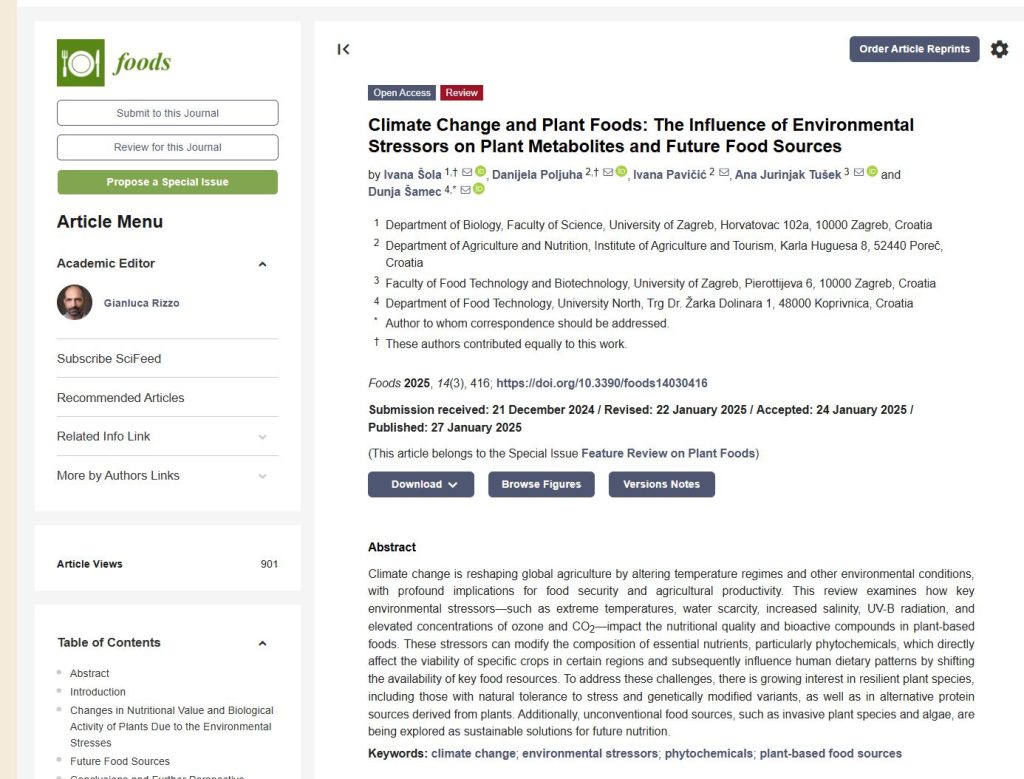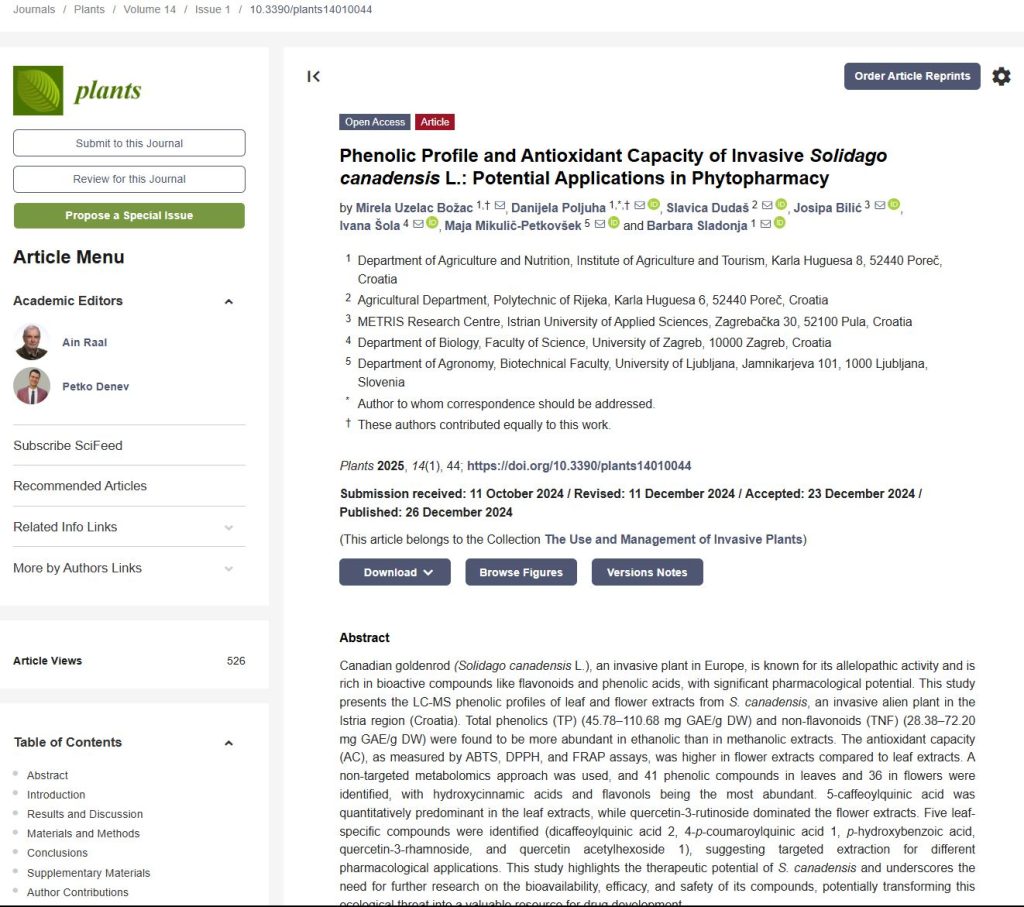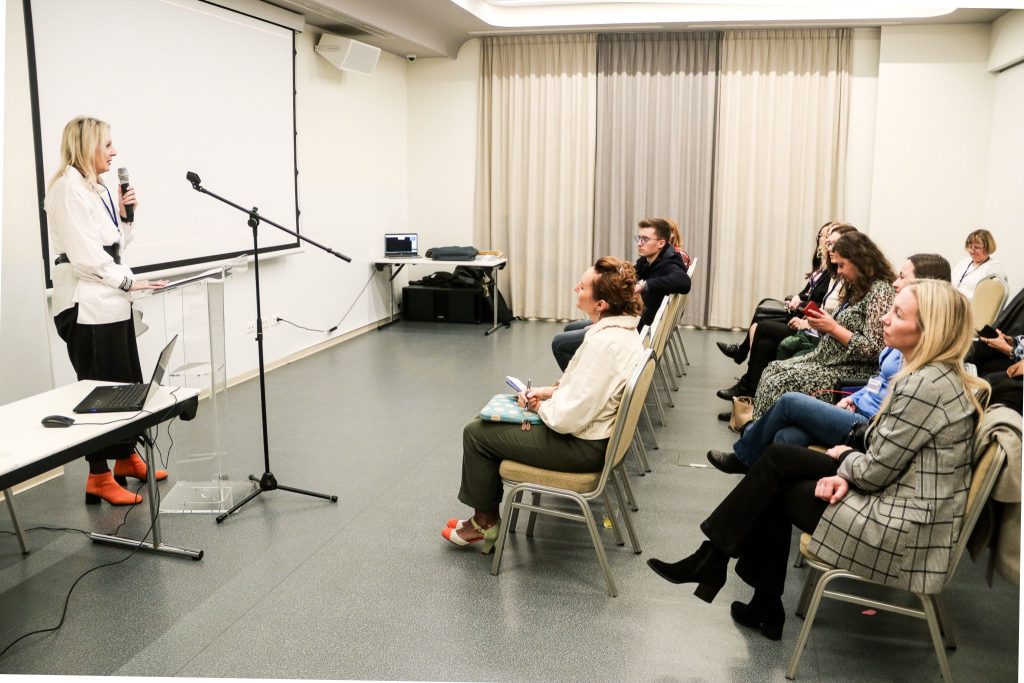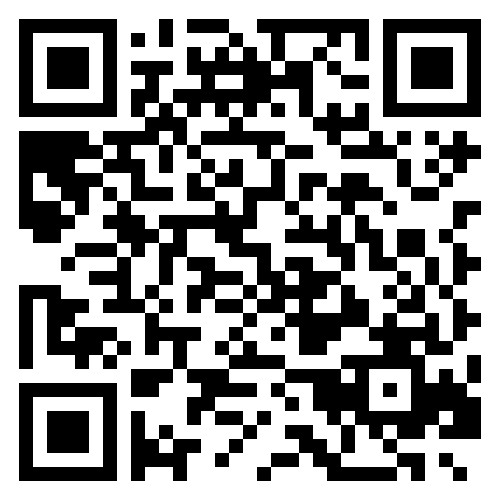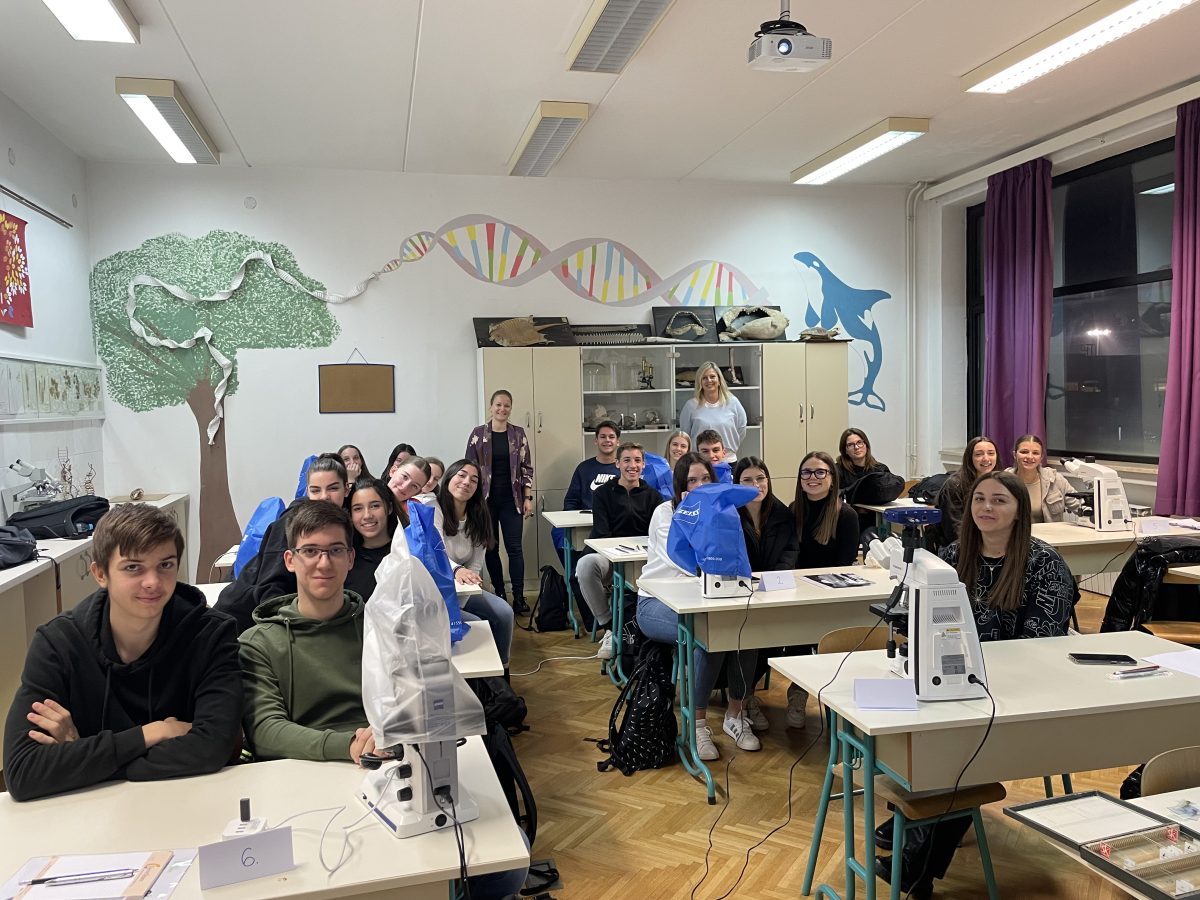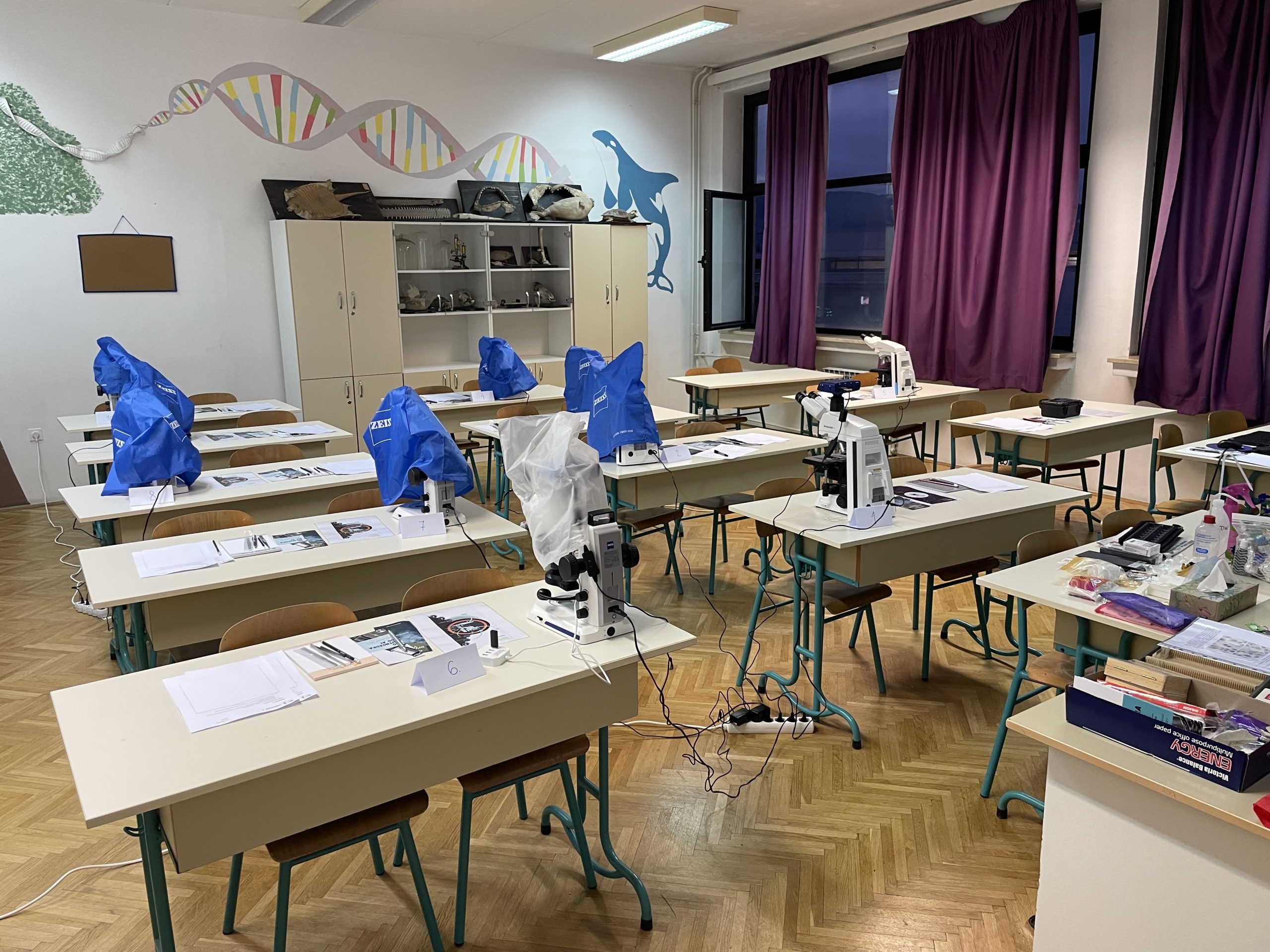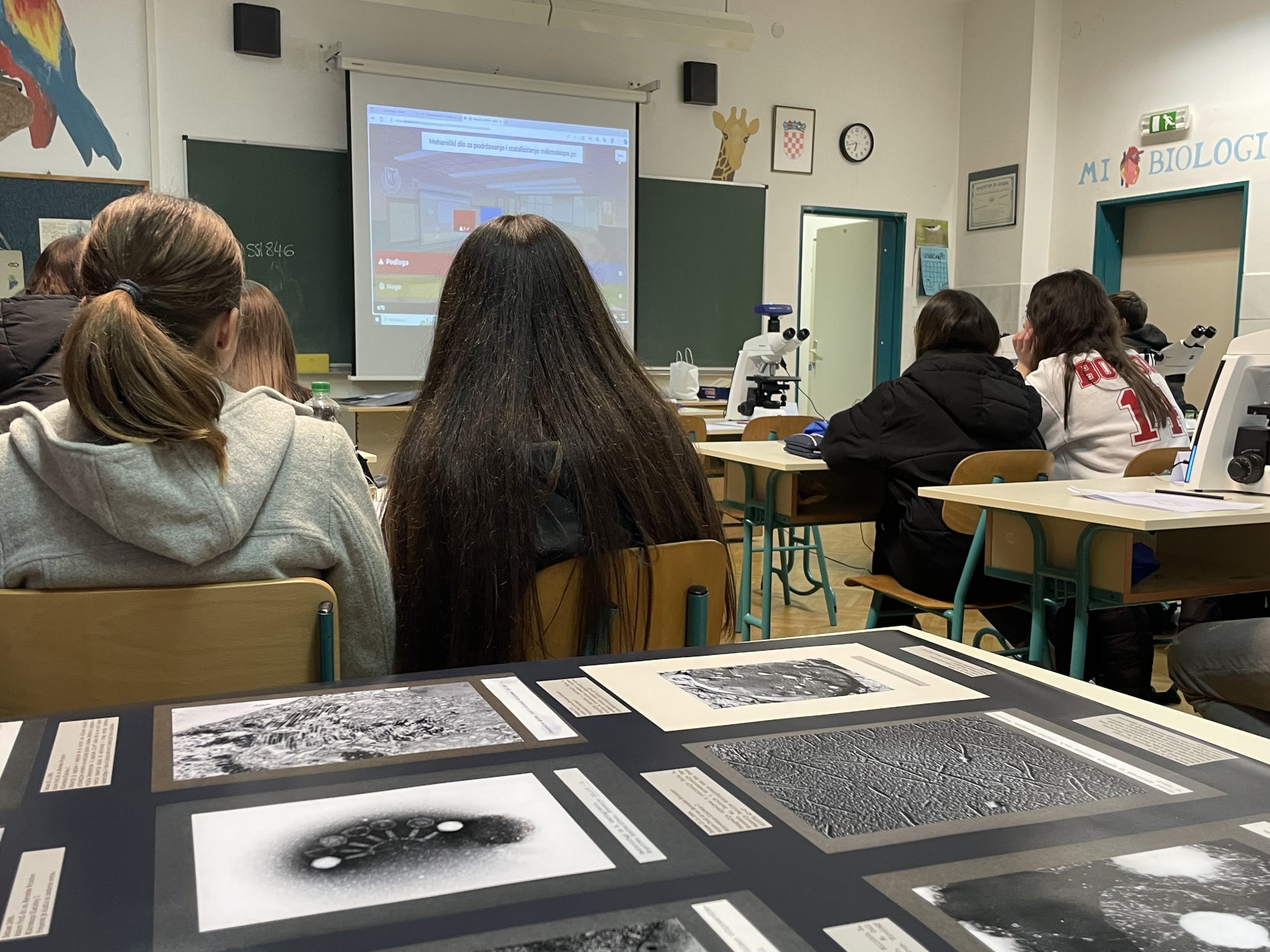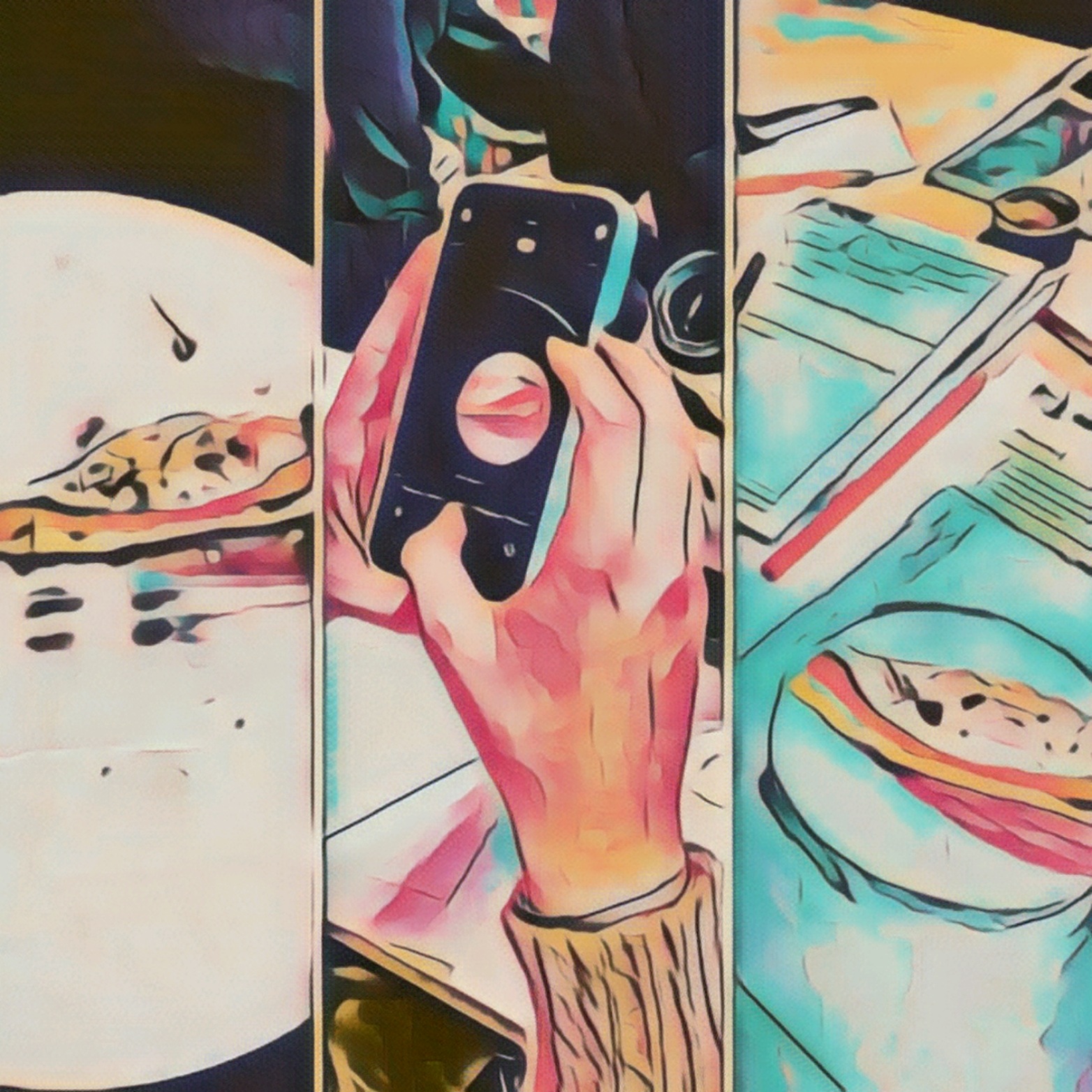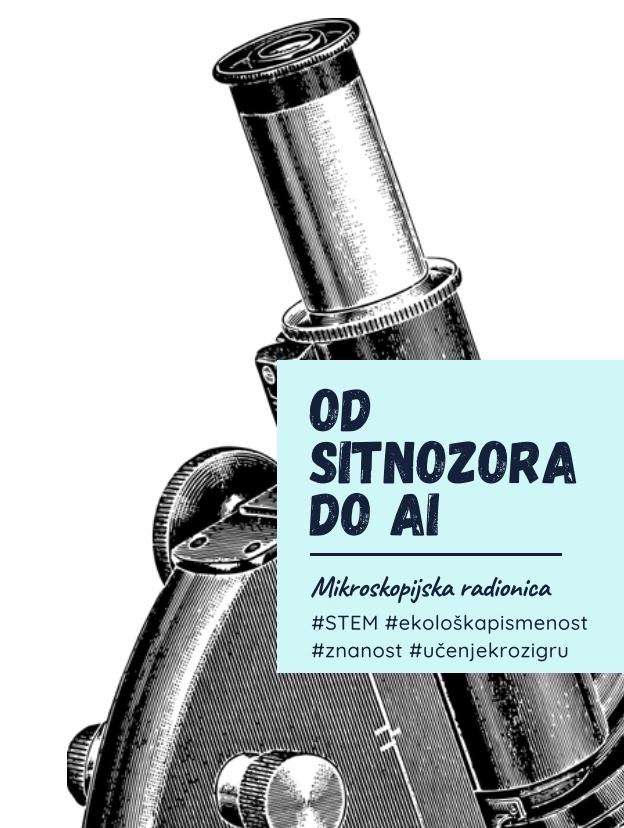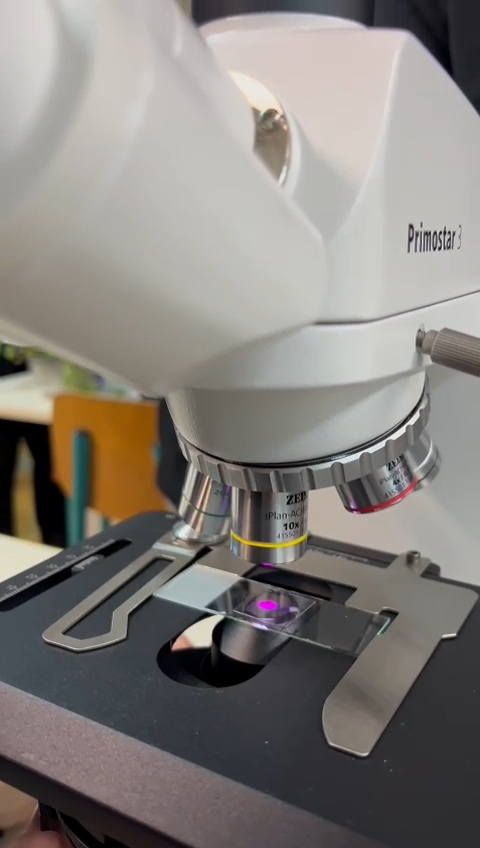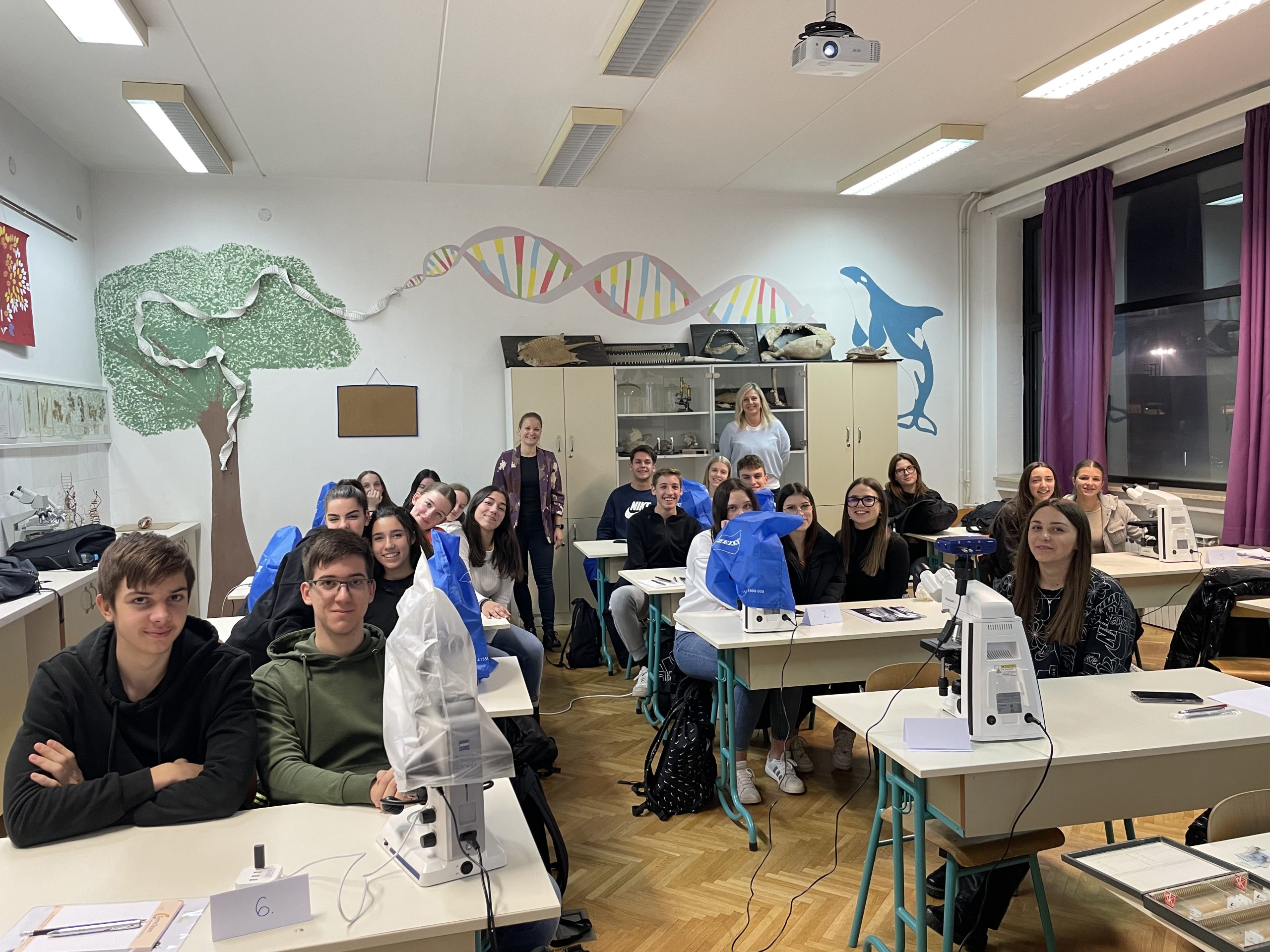Can alien invasive plant species be useful? Can they be utilized in the pharmaceutical industry? The results of our project NATURE AS AN ALLY: ALIEN INVASIVE PLANT SPECIES AS A SOURCE OF PHARMACEUTICALS – NATURALLY, funded by the Croatian Science Foundation, support this idea.
An original scientific paper titled “Phenolic Profile and Antioxidant Capacity of Invasive Solidago canadensis L.: Potential Applications in Phytopharmacy”, authored by Mirela Uzelac Božac, Danijela Poljuha, Slavica Dudaš, Josipa Bilić, Ivana Šola, Maja Mikulič-Petkovšek, and Barbara Sladonja, highlights the therapeutic potential of Canadian goldenrod, an invasive plant widespread in our region. The study emphasizes the need for further research on the bioavailability, efficacy, and safety of its compounds, potentially transforming this ecological threat into a valuable source of bioactive compounds for drug development. The paper was published in the journal Plants (IF 4.0) and is the result of international collaboration among researchers from five institutions.
How Do Climate Changes Shape Our Future Food? Are Invasive Plant Species the Food of the Future?
Our new review paper, “Climate Change and Plant Foods: The Influence of Environmental Stressors on Plant Metabolites and Future Food Sources”, explores how environmental stress conditions impact plant metabolites and essential nutrients. It examines the potential of resilient and genetically modified plants and the role of unconventional food sources—such as algae and invasive plant species—in ensuring sustainable nutrition. This scientific paper was published in the prestigious journal Foods (IF 4.7) and is the result of a collaboration between three projects funded by the Croatian Science Foundation: GinkoBiFlav, Temphys, and NATURALLY. The paper is part of joint research activities established under a 2023 cooperation agreement to strengthen research networks between the Institute of Agriculture and Tourism, the Faculty of Science University of Zagreb, and the University North. The authors of this paper are Ivana Šola, Danijela Poljuha, Ivana Pavičić, Ana Jurinjak Tušek, and Dunja Šamec.
